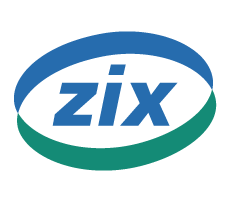In recent months, farmers have been urgently looking for ways to improve biosecurity measures to protect against the rapidly spreading avian influenza (H5N1). For example, the European Food Safety Authority reported outbreaks in 27 European countries between September and December 2024, while the Centers for Disease Control and Prevention in the United States documented cases in poultry, dairy cattle, and even humans. It is time to raise biosecurity measures to the highest standards to prevent the disease from spreading.
Avian influenza, widely known as bird flu, is an extremely contagious and devasting viral disease primarily affecting wild and domestic birds. The virus is most prevalent during bird migration, as wild birds serveact as reservoirs/carriers, harbouringharboringcarrying multiple strains of avian influenza viruses without displaying symptoms. Transmission often occurs through direct contact with wild birds or exposure to infected feces or secretions. Research highlights a direct link between avian migration and the spread of the disease. Not all variants of avian influenza are highly pathogenic, . sSome variants only cause mild disease. However, strains like A( H5N1) are highly pathogenic and the main drivers for the epidemic observed today.
For farmers, an outbreak represents a dramatic scenario, often leading to high economic losses. In the EU, for example, stringent measures are enforced such as complete emptying of the farm, installing a protection zone and a surveillance zone with restricted movement, in these areas and, premises must be thorough cleanin and disinfection of the premises.
BIOSECURITY MEASURES
These measures must be focused on preventing the entry of the virus into our farm and, if the virus enters the facilities, limit its spread within the facilities or outside the facilities.
- Perimeter fencing and good general condition of our facilities A good perimeter fence and the correct state of our facilities will prevent the access of animals from outside our facility or the exit of animals from it. In the same way, the state of the feed stores or water tanks must be correct, preventing animals or external elements from accessing them.
- External elements that enter our (raw materials, equipment, etc.) Countless elements enter our facilities daily. Every day we give access to our facilities to raw materials from our suppliers, for this reason, we must keep scrupulous control and disinfection of all the elements that enter, ensuring that all these elements have been disinfected in such a way that they do not pose a risk. Permanent controls must be established with the suppliers of the animals to eliminate possible causes of virus infections. In this case, suppliers must have their biosafety plan that will complement our plan. In this way, if all the links in the production chain have their biosecurity plan, the probability that they will be caused by cases of Avian Influenza will be very close to 0.
- Vehicles In the same way that we establish controls for the supplies/animals that enter our facilities, we must implement disinfection measures for the vehicles in charge of delivering them. Both the vehicles that access our facilities and the people who drive them must be previously cleaned and disinfected, as they can act as a vectors of the disease. It is extremely important to clean both the interior and exterior of the vehicle, and we must also do the same with the wheels, so appropriate wheelbaths must be placed for all types of vehicles. Internal staff and external staff We must minimize the number of visitors who access our facilities, only the people necessary for the proper functioning of the facility should enter. These people can be internal, who work in the facilities, or outsiders who come to perform services these are external elements that must also pass disinfection before their entry As key elements for its correct control, cleaning, and disinfection are: -Farm general cleaning a disinfection.
- Specific work clothing If possible, visitors should wear clean and sanitized overalls and work boots.
- Footbaths at the entrance Broad-spectrum disinfectant footbaths should also be placed at all entrances. These baths should be changed periodically depending on the type of disinfectant
- Frequent hand washing All people should wash their hands at any entrance, when changing activities, before starting, after breaks, and before leaving the farm.

Biocidas ZIX offers a wide offers a wide solutions range to maintain high biosecurity standards. A strong biosecurity protocol starts with access control, cleaning all surfaces, stables, vehicles, and equipment at regular intervals and disinfecting them afterward. To achieve this, we recommend Clean Zix Foam, an alkaline, foam cleaner that effectively removes dirt and microorganisms. Moreover, cleaning before disinfection enhances the effectiveness of disinfectants.
After cleaning, all surfaces, materials (including boots), and equipment on the farm must be thoroughly disinfected. Virox and Zix Virox, meet the needs of livestock environments for hard surface disinfection. Virox is a powerful powder disinfectant based on potassium monopersulfate, and Zix Virox is a liquid-form disinfectant based on a synergistic combination of peroxides and acetic acid. Both disinfectants have demonstrated virucidal activity against avian influenza following Virox under EN 14675 standards, providing optimal results for farm hygiene.
Avian influenza viruses canmay survive between 8-48 hours in water, suggesting waterline disinfection is indispensable. To mitigate this risk, we recommend dosing Huwa-San TR- 50*Aquazix Plus Ag into the drinking water system to maintain water quality. This stabiliszedstabilized biocide, based on hydrogen peroxide, demonstrates full virucidal activity according to EN 14766 and EN 16777.
Avian influenza viruses can survive between 8-48 hours in water, suggesting that disinfection of water lines is essential. To mitigate this risk, we recommend dosing Aquazix Plus Ag into the drinking water system to ensure pathogen-free drinking water. This stabilized biocide, based on hydrogen peroxide, demonstrates virucidal activity according to EN 14766 and EN 16777 standards. The water’s quality and microbiological condition must be optimal.
If we follow these measures exhaustively and without fail, we will not only protect ourselves against Avian Influenza and other diseases, but these measures will also complement other biosecurity measures being implemented at different links in the production chain. Additionally, we will be indirectly protecting society in general.
The key to success is gaining the involvement of all staff involved in production; we must all be aware of the importance of biosecurity to put in the necessary effort to apply the measures effectively.






